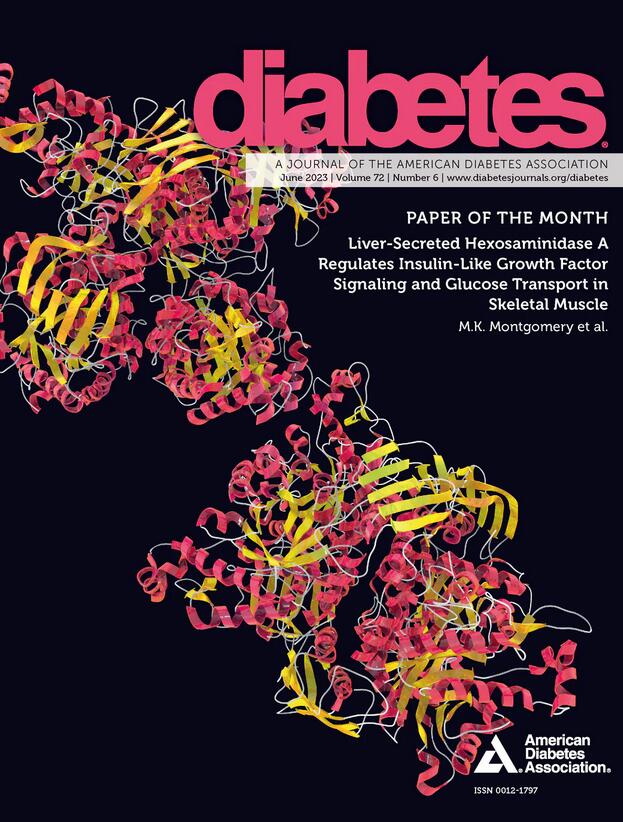Mc4r表达细胞中的CRTC1是外周代谢和全身能量平衡所必需的
IF 6.2
1区 医学
Q1 ENDOCRINOLOGY & METABOLISM
引用次数: 0
摘要
黑色素皮质素-4-受体(Mc4r)是一种 G 蛋白偶联受体(GPCR),它通过调节食物摄入和能量消耗来控制全身能量平衡。cAMP反应元件结合蛋白调控转录共激活因子-1(CRTC1)选择性地在神经元细胞中表达,并参与转录调控,从而促进神经元可塑性和能量平衡。考虑到 CRTC1 活性的 cAMP 依赖性调控,Mc4r 表达细胞中的 CRTC1 可能通过黑色素皮质素途径促进能量平衡调控。在这种情况下,我们研究了Mc4r表达细胞中的CRTC1对能量代谢的生理贡献。在这项研究中,Mc4r-表达细胞中 CRTC1 缺乏的小鼠表现出:1)适度肥胖、葡萄糖不耐受、胰岛素抵抗、高胰岛素血症和高脂血症;2)全身能量消耗和产热减少;3)黑色素皮质素激动剂诱导的能量消耗和食物摄入适应性受到抑制;4)棕色脂肪组织和骨骼肌的生热程序和氧化途径受损;5)肝脏和白色脂肪组织的生脂程序增强。这些结果为了解黑色皮质素系统调节能量平衡的分子机制提供了新的视角。本文章由计算机程序翻译,如有差异,请以英文原文为准。
CRTC1 in Mc4r-expressing cells is required for peripheral metabolism and systemic energy homeostasis
Melanocortin-4-receptor (Mc4r) is a G protein-coupled receptor (GPCR) that controls systemic energy balance by regulating food intake and energy expenditure. Although the detailed molecular mechanism remains unclear, the activation of cAMP signaling in Mc4r-expressing cells reportedly suppresses food intake and increases energy expenditure. cAMP-responsive element-binding protein-regulated transcriptional co-activator-1 (CRTC1) is selectively expressed in neuronal cells and participates in transcriptional control, thereby contributing to neuronal plasticity and energy homeostasis. Considering the cAMP-dependent regulation of CRTC1 activity, CRTC1 in Mc4r- expressing cells may contribute to energy balance regulation through the melanocortin pathway. In this context, we examined the physiological contribution of CRTC1 in Mc4r-expressing cells to energy metabolism. In this study, mice with CRTC1 deficiency in Mc4r-expressing cells exhibited 1) modest obesity, glucose intolerance, insulin resistance, hyperinsulinemia, and hyperlipidemia; 2) decreased systemic energy expenditure and thermogenesis; 3) suppression of melanocortin agonist-induced adaptation of energy expenditure and food intake; 4) impaired thermogenic programs and oxidative pathway in brown adipose tissue and skeletal muscle; and 5) enhanced lipogenic programs in the liver and white adipose tissue. These results provide novel insights into the molecular mechanisms underlying the regulation of energy balance by the melanocortin system.
求助全文
通过发布文献求助,成功后即可免费获取论文全文。
去求助
来源期刊

Diabetes
医学-内分泌学与代谢
CiteScore
12.50
自引率
2.60%
发文量
1968
审稿时长
1 months
期刊介绍:
Diabetes is a scientific journal that publishes original research exploring the physiological and pathophysiological aspects of diabetes mellitus. We encourage submissions of manuscripts pertaining to laboratory, animal, or human research, covering a wide range of topics. Our primary focus is on investigative reports investigating various aspects such as the development and progression of diabetes, along with its associated complications. We also welcome studies delving into normal and pathological pancreatic islet function and intermediary metabolism, as well as exploring the mechanisms of drug and hormone action from a pharmacological perspective. Additionally, we encourage submissions that delve into the biochemical and molecular aspects of both normal and abnormal biological processes.
However, it is important to note that we do not publish studies relating to diabetes education or the application of accepted therapeutic and diagnostic approaches to patients with diabetes mellitus. Our aim is to provide a platform for research that contributes to advancing our understanding of the underlying mechanisms and processes of diabetes.
 求助内容:
求助内容: 应助结果提醒方式:
应助结果提醒方式:


